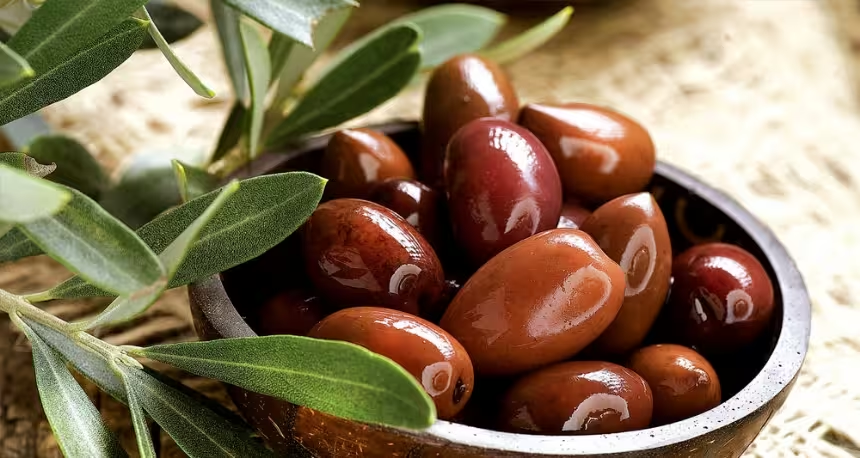
The Best Olive Varieties from Greece (Complete 2025 Guide)
Greece is not only the birthplace of democracy and philosophy — it’s also one of the world’s oldest and most respected olive-producing regions. With over 100 native olive cultivars and centuries of farming heritage, Greece offers a stunning variety of olives that differ in flavor, size, texture, and use. Whether you’re seeking bold table olives or the richest extra virgin olive oils, knowing the top Greek olive varieties can help you choose with confidence.
🇬🇷 Why Greece Is the Home of Olive Excellence
What makes Greek olives special is not just their quality – it’s the harmony between nature and tradition. Grown across sun-drenched islands and mountainous terrains, these olives benefit from mineral-rich soils, ancient trees, and generations of know-how. Unlike heavily commercialized olives elsewhere, most Greek varieties are handpicked, naturally fermented, and minimally processed.
Top Greek Olive Varieties You Need to Know
Let’s take a deep dive into the most important Greek olives, both for eating and oil production. Each has unique characteristics and regional identity.
| Olive Variety | Region | Best Use | Flavor Notes |
|---|---|---|---|
| Kalamata | Peloponnese | Table olives | Fruity, tangy, meaty texture |
| Halkidiki | Northern Greece | Stuffed olives, table | Large, crisp, slightly peppery |
| Koroneiki | Crete, Peloponnese | Olive oil | Grassy, peppery, intense |
| Throuba | Thassos, Cyclades | Natural cured table olive | Wrinkled, mild, sweet aftertaste |
| Amfissa | Central Greece | Dual use (table & oil) | Soft, nutty, briny |
| Megaritiki | Attica, Boeotia | Olive oil | Earthy, smooth |
1. Kalamata Olives: The Global Star
Probably the most famous Greek olive, Kalamata olives are almond-shaped, dark purple, and often preserved in wine vinegar or olive oil. They’re known for their rich taste, meaty texture, and are a Protected Designation of Origin (PDO) product – meaning only olives from the Kalamata region can legally be called by this name in the EU. They’re perfect for salads, charcuterie boards, and snacking straight from the jar.
2. Halkidiki Olives: The Giant Green Treat
Bright green and impressively large, Halkidiki olives are often stuffed with ingredients like garlic, cheese, or almonds. Native to Northern Greece, they’re firm, slightly spicy, and ideal as appetizers. Their size and low bitterness make them especially popular in international markets.
3. Koroneiki Olives: The Olive Oil Powerhouse
Koroneiki is the olive of choice for high-end Greek extra virgin olive oil. Though small in size, it’s packed with antioxidants and produces oil with exceptional flavor and aroma. With a peppery finish and grassy notes, Koroneiki oil is favored by chefs for drizzling over salads, seafood, and grilled vegetables. It makes up over 60% of Greece’s olive oil production.
4. Throuba Olives: Naturally Ripened Gems
Unique in the olive world, Throuba olives are allowed to ripen and dry naturally on the tree. This shrivels them into a wrinkled appearance and gives them a low bitterness — meaning they can be eaten raw or lightly salted. You’ll mostly find them from the island of Thassos. They’re soft, sweet, and loved by traditionalists.
5. Amfissa Olives: Balanced & Versatile
Grown in Central Greece around Delphi and Mount Parnassus, Amfissa olives are round, with a smooth bite and gentle flavor. They’re often brine-cured and eaten at different stages of ripeness (green, purple, black). Their delicate taste makes them perfect for mild palates and mixed olive blends.
6. Megaritiki Olives: The Attica Classic
Less known internationally, Megaritiki olives are widely used in domestic Greek olive oil production. Grown in Attica and Central Greece, they yield a smooth, golden oil with a buttery texture. If you find “early harvest” Greek oil, it’s often Megaritiki olives behind the label.
How to Choose the Right Olive for You
- For eating: Choose Kalamata, Halkidiki, or Throuba.
- For cooking oil: Look for Koroneiki or Megaritiki-based EVOO.
- For stuffing or salads: Go for large Halkidiki olives.
- For softer taste: Choose Amfissa or Throuba olives.
Where to Buy Authentic Greek Olives
Make sure to source olives from trusted Greek producers. Look for PDO-labeled jars, organic certification, or direct-from-Greece sellers. Visit our Buy Greek Olives Online page for a curated list of stores and marketplaces that ship worldwide.
❓FAQ: Greek Olive Varieties
Q: Are all black olives in Greece Kalamata?
A: No. While Kalamata is the most popular, black olives in Greece can also come from Amfissa, Throuba, or other varieties depending on curing and ripeness.
Q: Which olive has the most antioxidants?
A: Koroneiki olives have some of the highest polyphenol levels, making them ideal for olive oil health benefits.
Q: Can I use table olives for making olive oil?
A: Technically yes, but table olives aren’t optimized for oil yield or taste – Koroneiki and Megaritiki are far better suited for this purpose.



